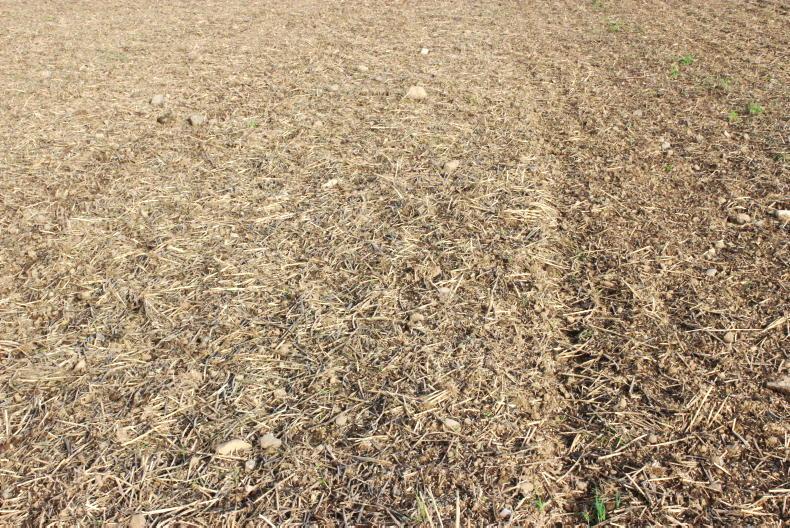With a straw incorporation scheme in the pipeline, Teagasc recently looked at some of the figures involved at the first of its spring tillage seminars.
Dermot Forristal outlined that straw generally contains approximately 40% carbon (C) and 20% of that carbon can remain in the soil, so a high yielding winter wheat crop returning 6.4t/ha of straw, which would usually be baled, has the potential to add 500kg of C/ha to the soil.
Apart from the carbon storage potential, an increase in soil carbon also means an increase in soil organic matter. Forristal noted that average soil organic matter contents on tillage soils are 5%, but levels below this are concerning. Chopping straw can help to maintain and gradually increase soil organic matter levels over time.
With the build-up of organic matter comes improvements in soil structure as aggregates hold together better, earthworm numbers increase and water infiltration improves. Better biological functioning and nutrient cycling can also follow.
Return of nutrients to the soil
Approximately 10% of phosphorus applied to cereal crops is contained in the straw, while approximately 50-60% of potassium applied ends up in the straw. In an oat crop (yielding 9t/ha) for example, 3.6kg/ha of phosphorus (P) and 87kg/ha of potassium (K) can be returned to the soil through the straw. With these nutrients valued at approximately €82/ha and oaten straw often a hard sell this may be a really good option for many.
Soil carbon build up
As a comparison Forristal also looked at how other soil treatments can affect soil carbon levels. As mentioned above, winter wheat straw (6.4t/ha of straw) can deliver 500kg of C/ha. Farmyard manure (applied at 20t/ha) can contribute approximately 300kg of C/ha, while 25,000L/ha of slurry can deliver approximately 50kg of C/ha. A cover crop which produces approximately 3t DM/ha can return approximately 250kg of C/ha.
Key management practices
Two key things outlined as crucial to incorporating straw are; to ensure the chopper is distributing the straw evenly over the soil and that the straw is incorporated as soon as possible in order to start to break down.
Farmer view
However, in some situations straw does not need to be incorporated using a cultivator. Speaking on the Teagasc webinar, Patrick Mulhall, a farmer in Tullow, Co Carlow explained that he began chopping straw when he lost sugar beet from his rotation and was growing continuous cereal crops. Patrick noticed his crop yields were deteriorating and started to chop and incorporate straw to improve soil health.
Patrick direct drills on his farm so the straw is incorporated by the earthworms. Straw is spread on the surface and earthworms break down the straw while incorporating it into the soil.
On examination his soil structure has significantly improved. The soil is crumbly, earthworm numbers have increased and Patrick’s input costs have declined, particularly P and K and Patrick attributes straw chopping to some of this reduction.







 This is a subscriber-only article
This is a subscriber-only article










SHARING OPTIONS: